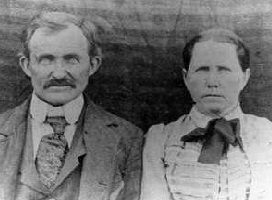Church of God Celebrates 125 Years
The Church of God is celebrating its 125th anniversary in August. The following article describes how the denomination was born.
One and a quarter centuries ago Richard Green Spurling, best known as R.G. Spurling, issued a call to form what is now the Church of God. From the eight who responded to his invitation, our movement now numbers almost 7 million members in 181 nations and territories. Following his challenging message on Aug. 19, 1886, Spurling concluded: “As many Christians as are here present that are desirous to be free from all men-made creeds and traditions, and are willing to take the New Testament, or law of Christ, for your only rule of faith and practice; giving each other equal rights and privilege to read and interpret for yourselves as your conscience may dictate, and are willing to sit together as the Church of God to transact business [as] the same, come forward.”
With that invitation, the small band of believers meeting in Monroe County, Tenn., formed a congregation that they called the Christian Union. In this unexpected region of the country, people hungry for the restoration of New Testament Christianity sought God and came together to be God’s church. Out of their vision of Christian union, with the later addition of the experiences of sanctification and Spirit baptism, came the “Church of God” as we know our movement today.
The vision for Christian Union rose first in the heart of R.G. Spurling (1857-1935) and his father Richard Spurling (1810-1891). The younger Spurling had been a licensed minister in the Pleasant Grove Baptist Church. Along with his father, an ordained Baptist elder, he began to seek God regarding abuses he saw in the churches around him. According to the earliest chronicler of these events, Spurling became disturbed about certain traditions and creeds that he considered a hardship for God’s people. He saw a need for further reformation of the church beyond the Great Reformation of the 16th century.
While Luther, Calvin and other reformers had brought about important changes, their legacy focused on assent to a particular doctrine rather than on a right relationship with Christ and His people. Their legacy was that creeds and human traditions became more important than the leading of the Holy Spirit and one’s own Christian conscience.
Spurling and his father were particularly troubled with the Landmark movement that dominated Baptist life in the South from the middle part of the 19th century. The name “Landmark” came from an emphasis on Proverbs 22:28, “Remove not the ancient landmark, which thy fathers have set” (KJV). Landmark adherents taught that Baptists were putting aside a significant boundary of the church when they worshipped and fellowshipped with non-Baptists. Landmark Baptists taught a line of Baptist succession from the time of Christ, the importance of believer’s baptism by a Baptist minister, and the exclusivity of Baptist churches.
For R. G. Spurling, where believers practice Christ’s command to love God and neighbor, a testimony of faith in Christ is sufficient for unity with one another. Spurling further taught that the New Testament is the only “infallible rule of faith and practice” and contains everything “necessary for salvation and church government.” He saw harshness and exclusivity in the teachings of the Landmark movement that stifled the gospel and led to dividing the body of Christ rather than to Christian unity.
His vision to restore the law of love and individual conscience to Christianity bore fruit on Aug. 19, 1886. For the previous two years he had prayed for reformation along with his father and John Plemons. After being barred from his own Baptist church and seeing little hope of any change in the existing churches, Spurling met with others of like mind in a meeting house along Barney Creek and issued his invitation.
Because his father Richard was ordained, the elder Spurling moderated the proceedings to formally establish the congregation. Once organized, the church then selected R. G. Spurling as pastor and ordained him the following month.
Little is known about the original Christian Union and the continuing ministry of R. G. Spurling. A. J. Tomlinson, who knew Spurling well in later years, wrote that he preached wherever he had an opportunity and “in this way the minds of the people were continually agitated, and gradually prepared for the work of the Spirit that was to follow.” A biographical sketch by his son, G. P. Spurling, reveals that between 1889 and 1895, Spurling organized three other Christian Union congregations. Although his ministry is less known than many who came later, his vision of reformation laid the foundation upon which we continue to build today.
Dr. David G. Roebuck is director of the Dixon Pentecostal Research Center and an assistant professor of the history of Christianity at Lee University.














































